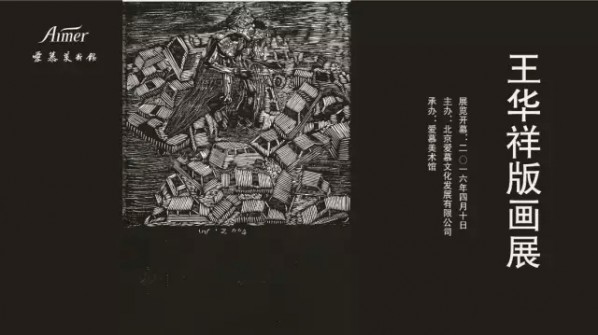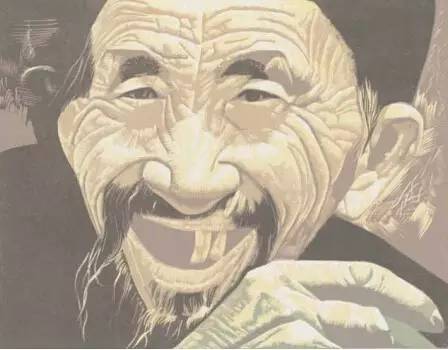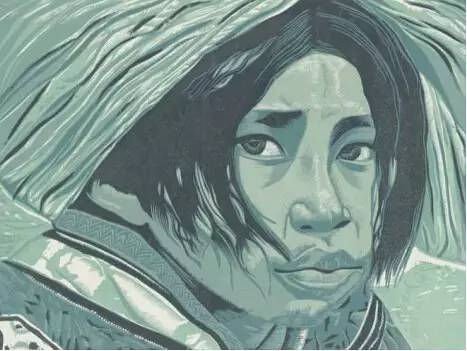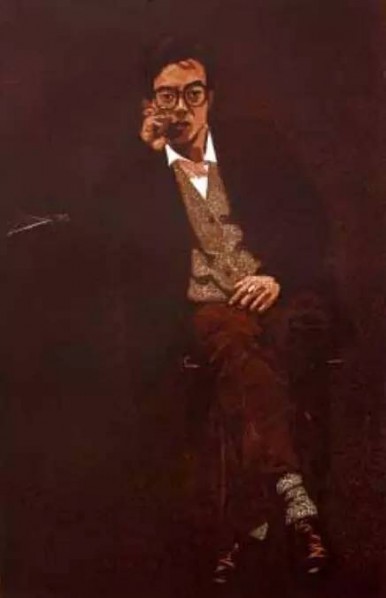
The vernissage of “Wang Huaxiang Printmaking Exhibition” will be unveiled at Aimer Art Museum at 4:00 pm on April 10, 2016. The exhibition is about to showcase more than 40 masterpieces by Wang Huaxiang through his different ages, including “People from Guizhou” and “Close Quarters” series. The exhibition is hosted by Aimer Culture Development Co., Ltd., organized by Aimer Art Museum, the famous printmaking worker Prof. Sui Cheng from Shenzhen University serves as the curator, the exhibition will continue to May 20. Wang Huaxiang was born in Guizhou province in 1962, graduated from the Guizhou Provincial Art School in 1981, and then graduated from China Central Academy of Fine Arts in 1988, currently he serves as the Director of the Department of Printmaking, China Central Academy of Fine Arts, Professor and doctoral supervisor.

Wang Huaxiang, People from Guizhou No.4, chromatography woodblock print, 36.8 x 27.7 cm, 1988
In 1988, Wang Huaxiang was known for the chromatography woodblock printer “People from Guizhou” without a main board, and it also won the Gold Prize of the 7th National Art Exhibition. “People from Guizhou” was the beginning of his conversation with the reality, in this work he clearly showcased his regional identity as a man from Guizhou Province, the emotional experience and the unique local cultural resource, it has implemented the development of the printmaking language of Wang Huaxiang, adding a new life to the printmaking family.

Wang Huaxiang, Close Quarters – Tan Shuquan, chromatography woodblock print, 31.8 x 27.4 cm, 1991
“People from Guizhou” series established his status in Chinese printmaking circles, in the development of realistic spirit and artistic language, the “Close Quarters” series use the extremely vivid realistic paintings to highlight things all around, which led to a trend in art. In the “Close Quarters” series, Wang focused on the artists and friends living around him, the use of the most realistic way to pay close attention to Chinese realities around him. Compared with the “People from Guizhou” series, “Close Quarters” series made a new development on a technical level, he reduced the style of cutting, through the simply repetitive overlapping method to make single lines rich and heavy, which made the characters become three-dimensional in the history of printmaking; although the use of color was reduced, the sense of richness of color is increased, so that the shape, color and marks were organically combined, to create a new language of printmaking.

Wang Huaxiang, People from Guizhou No.2, chromatography woodblock print, 36.8 x 27.7 cm, 1988
In 1994, “Following the Wrong” was published, which triggered a big discussion in Chinese art educational and cultural circles on the “teaching of drawing”, academy tradition and contemporary art. He advocated the “departure” from the tradition on the basis of understanding the tradition, “departure” from the reality on the basis of realism, namely building ideals on the basis of “existence”, breeding subjective in the arms of “objective”, erecting personality on the roof of similarity, looking for freedom in the historical sky. He explored the pampering of mistakes, giving play to mistakes and complying with the contingency, to accumulate aesthetic experiences in specific harvests. Looking for a special balance between the objects and images, subjective and objective, language and purpose, and then cultivating and developing the individual aesthetic standard, and eventually creating his own unique artistic style.

Wang Huaxiang, A Neat Man, chromatography woodblock print, 61 x 39.5 cm, 1990
“32 ways of cutting for a portrait” starts from a simple composition, a man, an animal or a plant, the use of the realistic way to gradually change the image, through every transformation to expand students’ imagination and change student’s inertia.
About the exhibition
Date: April 10 – May 20, 2016
Venue: Aimer Art Museum
Address: 2/F Block C, Aimer Building Guangshun North Street, Wangjing Chaoyang District, Beijing
Translated by Chen Peihua and edited by Sue/CAFA ART INFO




























